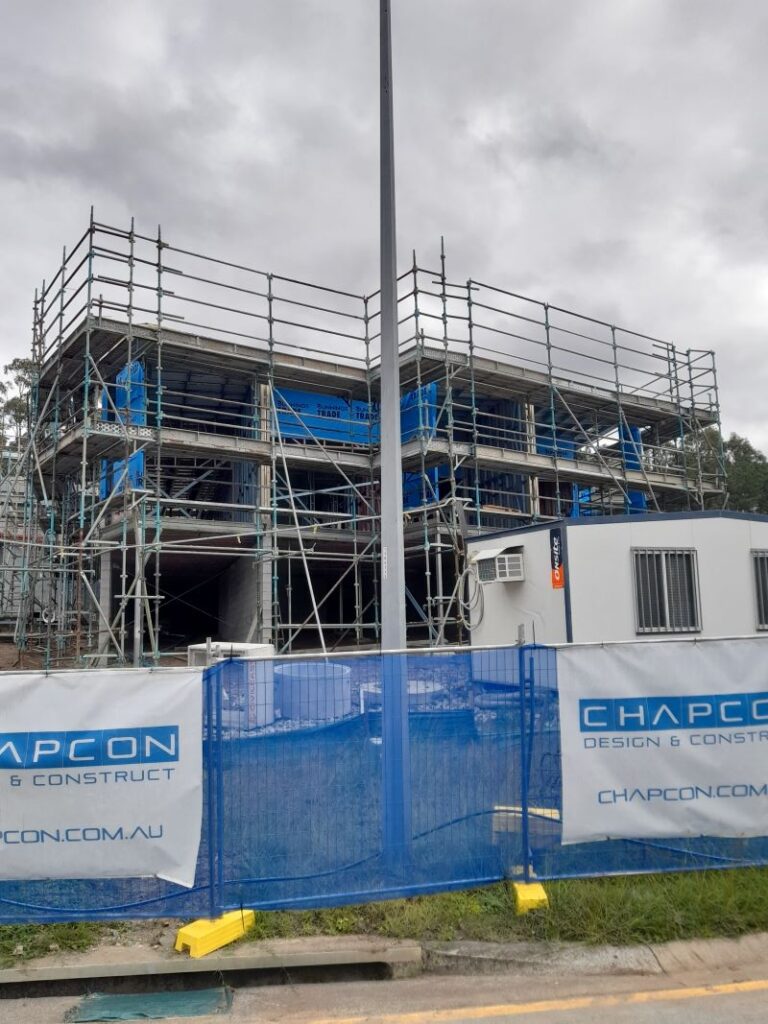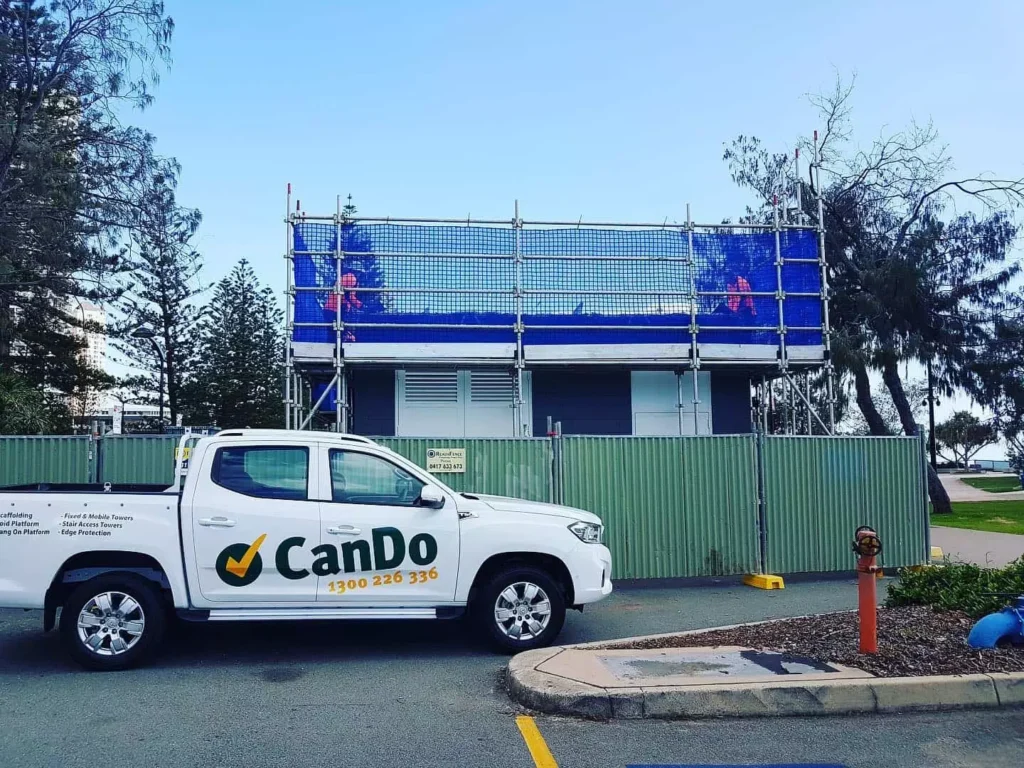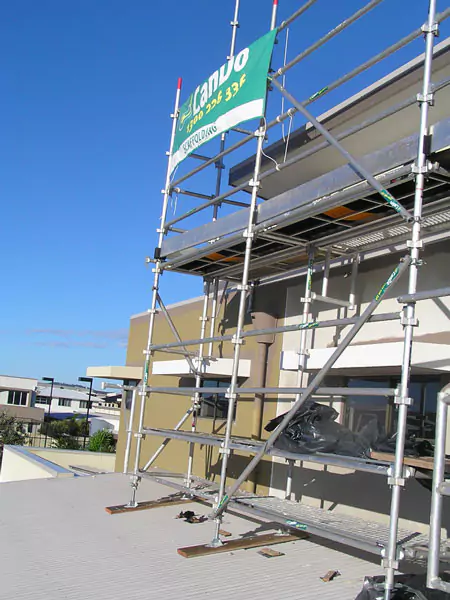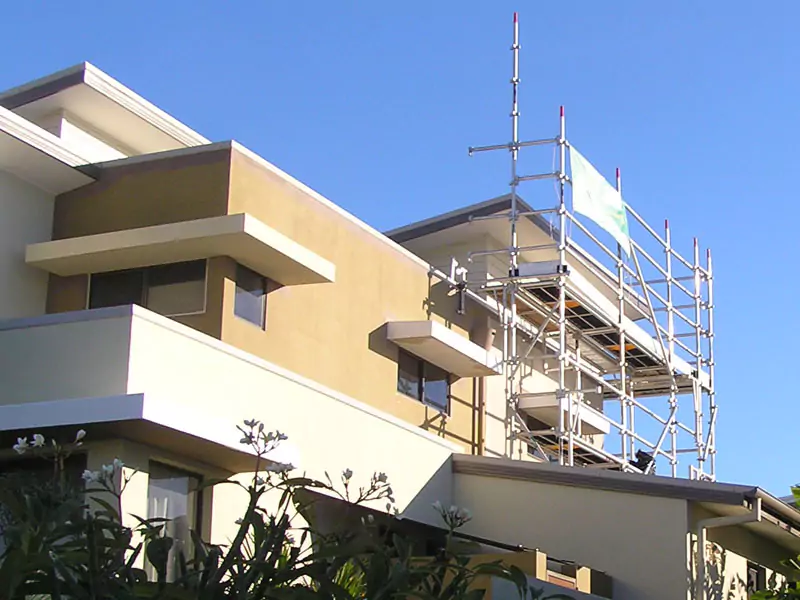Discovering the Essential Advantages of Scaffolding Hire for Enhanced Construction and Renovation Success
In the construction and renovation industry, scaffold hire is a cornerstone that significantly contributes to both safety and productivity across diverse projects. Commonly known as scaffolding, this temporary framework is crucial for supporting laborers and providing a secure platform for materials during construction, maintenance, or repair tasks. By implementing scaffold systems thoughtfully, workflows become considerably more efficient, enabling workers to access various heights and locations without hassle. This not only creates a well-organized and productive work environment but also strengthens safety protocols. When scaffolding is properly installed, it dramatically reduces the risk of accidents while accelerating the overall pace of renovation or restoration projects, solidifying its importance in the field.
Understanding the Critical Role of Scaffolding in Promoting Safety During Renovation and Restoration Projects
Throughout renovation and restoration efforts, workers often face the daunting challenge of performing tasks at considerable heights or in difficult-to-reach areas. In such scenarios, scaffolding becomes indispensable, offering a sturdy and secure platform that empowers workers to carry out their tasks both effectively and safely. It allows for safe and straightforward movement, facilitating access to various sections of the building while enabling workers to manage materials with confidence. Additionally, scaffolding simplifies the transport of heavy equipment and supplies to elevated areas, greatly enhancing productivity and improving overall efficiency on the job site. The implementation of scaffolding during renovation processes not only eases operational challenges but also raises safety standards on-site, paving the way for a smoother workflow.

Recognizing Essential Scenarios That Necessitate Scaffold Hire for Optimal Safety and Efficiency
The necessity for scaffold hire emerges in a variety of situations, especially when working on high-rise buildings or intricate structures. Below are some common instances that highlight the need for scaffold hire:
| Situation | Description |
|---|---|
| Painting | Utilizing reliable scaffold systems enables safe access to elevated surfaces, transforming painting tasks into more manageable and efficient endeavors. |
| Gutter Replacement | When replacing or maintaining gutters at roof level, scaffolding is crucial for providing a stable working platform for the crew. For more details, refer to our dedicated article on scaffolding solutions for gutter replacement. |
| Heightened Building Maintenance | Regular maintenance tasks such as painting, window cleaning, or facade repairs typically require scaffolding to safely access elevated areas. Scaffold hire guarantees that these tasks are executed securely and effectively. |
| Construction or Renovation Work | In construction or renovation projects, scaffolding is essential for workers needing access to different building levels. It serves as a reliable working platform for tasks like bricklaying, plastering, or window installations. |
Comprehending the necessity of scaffold hire is vital for maintaining the smooth progression of your renovation or restoration project. By recognizing the crucial role scaffolding plays and identifying specific circumstances that warrant its use, you can prioritize safety and efficiency in your construction endeavors. For more detailed information on when to hire scaffolding, explore our comprehensive article on scaffold hiring guidelines.
Mastering the Coordination Responsibilities in Scaffold Hire: An In-Depth Guide for Property Owners and Contractors
Arranging scaffold hire for any construction or renovation project necessitates a clear understanding and effective collaboration between the property owner and the contractor. Each party carries unique responsibilities to ensure the process is safe, efficient, and compliant with Australia’s stringent Work Health and Safety (WHS) regulations. The successful management of scaffolding relies on the meticulous execution of these responsibilities, ensuring that all safety protocols are followed throughout the project’s duration.
Defining the Property Owner’s Crucial Responsibilities in Scaffold Hire
As a property owner, you bear specific responsibilities related to scaffold hire, which include:
- Assessing the Need for Scaffolding: Your first duty is to determine whether scaffolding is necessary for your project. This assessment should take into account the building’s height, the nature of the tasks being performed, and relevant safety standards that must be followed.
- Defining Project Scope: Work closely with your contractor to define the project’s scope. Discuss essential details such as the expected duration of the project, the specific areas requiring scaffolding, and any unique requirements or constraints that could affect the project’s execution.
- Obtaining Required Permits and Licenses: Depending on local regulations, you may be required to secure specific permits or licenses for the use of scaffolding. Ensuring compliance with local laws is crucial for the project’s legitimacy and safety; therefore, do not overlook this step.
- Coordinating with the Scaffold Hire Company: Keep an open line of communication with the scaffold hire provider to express your project requirements, including timelines for delivery, installation, and dismantling of the scaffold. Effective communication is essential for a timely and safe scaffold setup.
Key Responsibilities of the Contractor in Managing Scaffold Hire
Contractors also have significant responsibilities when organizing scaffold hire. Their duties encompass:
- Assessing the Need for Scaffolding: The contractor must thoroughly evaluate whether scaffolding is necessary for the project. This evaluation should consider worker safety, the specific nature of the work involved, and accessibility to the work area.
- Selecting the Right Type and Size of Scaffold: Based on project requirements, the contractor should determine the appropriate type and size of scaffold needed. This includes assessing the scaffold’s height, load capacity, and structural stability to ensure safety and effectiveness.
- Coordinating with the Scaffold Hire Company: The contractor is responsible for liaising with the scaffold hire company to arrange the delivery, installation, and removal of the scaffold. Clear specifications and instructions are critical to guarantee that the scaffold is set up correctly and safely.
Promoting a Safety-First Culture: Shared Responsibilities in Scaffold Management
Under Australia’s WHS regulations, both property owners and contractors share accountability for ensuring the safety of workers on-site. Conducting regular inspections of scaffolding for potential hazards, such as loose fittings or environmental impacts, is vital to maintaining a secure working environment. Additionally, it is crucial to ensure that all workers receive adequate training on scaffold usage and have access to necessary personal protective equipment. This proactive approach fosters a culture of safety on-site, ultimately benefiting everyone involved.
Essential Factors to Evaluate for Successful Scaffold Hiring
When hiring scaffold for your renovation or restoration project, several key factors must be carefully considered. Taking the time to evaluate these aspects will ensure you select the right scaffold tailored to your project’s specific needs. Here are three primary considerations to keep in mind:
Conducting a Comprehensive Assessment of the Project Scope to Identify Scaffold Needs
Before moving forward with scaffold hire, it’s essential to conduct a thorough evaluation of your project’s overall scope. Consider critical elements such as the height and size of the structure you need to access, as well as the complexity of the tasks involved. For instance, if your project entails work on a high-rise building, specialized scaffold systems designed for taller structures may be necessary. Conversely, if you are replacing gutters on a single-story home, a more simplistic scaffold setup might adequately meet your needs.
By thoroughly understanding the project scope, you can accurately determine the precise requirements for scaffold hire. This insight will empower you to communicate effectively with the scaffold hire company, ensuring you obtain the right equipment tailored to the specific demands of your job.

Selecting the Ideal Type and Size of Scaffold for Your Unique Project Requirements
After thoroughly evaluating the project scope, the next step involves determining the appropriate type and size of scaffold required. There are various scaffold types available, including tube and clamp, system scaffold, and mobile scaffold, each offering distinct advantages and suited for different applications. When choosing the right scaffold type, consider essential factors such as stability, mobility, and ease of assembly.
Furthermore, it is crucial to establish the appropriate size of the scaffold based on the area you need to access and the number of workers using it. The selected scaffold must be capable of safely accommodating the load while providing a secure working platform. Collaborating with a professional scaffold hire company can greatly assist you in making informed decisions regarding the suitable type and size of scaffold necessary for your project, ensuring that all safety standards are not only met but exceeded.
Ensuring Adherence to Local Regulations: Acquiring Necessary Permits and Licenses
Before erecting scaffolding, it’s crucial to consult local authorities to obtain any required permits and licenses. Depending on your location and the specific details of your project, compliance with particular regulations and safety standards may be mandatory. Securing these permits and licenses is vital, as they ensure that the scaffolding is installed and utilized in accordance with industry norms, promoting a safe and compliant working environment.
By obtaining the necessary permits and licenses, you demonstrate a commitment to safety and compliance. This proactive approach not only protects workers on-site but also helps mitigate potential legal complications. It is advisable to work closely with the scaffold hire company to ensure that all regulatory requirements are satisfied before the commencement of your project, thereby avoiding any unnecessary delays.
Exploring the Benefits of Engaging with a Professional Scaffold Company for Your Needs
Choosing to hire scaffolding from a reputable professional company offers numerous advantages that significantly contribute to a seamless and successful project outcome. Here are some key benefits to consider:
- Expertise and Experience: Professional scaffold hire companies employ trained and experienced personnel who possess a comprehensive understanding of scaffold installation and dismantling processes. Their expertise allows them to assess your specific needs and provide tailored solutions that enhance safety and efficiency.
- Adherence to Safety Standards: Safety is paramount in any job involving heights. Reputable companies strictly follow safety regulations and guidelines, ensuring the well-being of workers and the surrounding environment. They are knowledgeable about appropriate installation techniques and take necessary precautions to minimize risks, safeguarding everyone involved.
- Quality Equipment: Established scaffold hire companies provide high-quality equipment that meets or exceeds industry standards, ensuring durability and reliability throughout your project.
- Time and Cost Savings: Hiring scaffolding from a professional company can lead to substantial time and cost efficiencies over time. Their expertise ensures efficient installation and dismantling, minimizing project delays and allowing you to adhere to your schedule. Moreover, they supply all requisite equipment and materials, relieving you of the need to invest in purchasing or maintaining scaffolding.
- Insurance Coverage: Reputable scaffold hire companies typically carry insurance to protect against potential accidents or damages. This level of coverage provides an extra layer of security and peace of mind for both property owners and contractors, ensuring that you are protected against unforeseen circumstances.
By opting to hire scaffolding from a professional company, you can significantly enhance the safety, efficiency, and overall success of your renovation or restoration project. Consider these benefits carefully and evaluate the key factors when selecting a scaffold hire company to make an informed decision tailored to your specific needs and requirements.
Dedication to Compliance with Established Safety Regulations and Guidelines
A primary responsibility in scaffold hire is ensuring adherence to established safety regulations and guidelines. These regulations encompass scaffold design, erection and dismantling protocols, as well as requirements for fall protection systems, guardrails, and access points. By strictly following these regulations, you can significantly decrease the risks of accidents, falls, and injuries on the worksite, fostering a culture of safety and responsibility.
Implementing Regular Inspections and Maintenance of Scaffold for Optimal Safety Management
Regular inspections and maintenance of scaffolding are crucial for identifying and addressing potential safety hazards. Inspections should be conducted before each use and at consistent intervals throughout the project duration to ensure that the scaffold remains in safe and stable condition. During these inspections, it is essential to check for any signs of damage, including bent or cracked components, loose connections, or missing guardrails.
Moreover, the stability of the scaffold should be evaluated, taking into account factors such as ground stability, wind loads, and weight capacity. If any issues or concerns arise during the inspection, they must be addressed immediately before resuming work on the scaffold. Routine maintenance tasks, including cleaning, lubrication, and necessary repairs, should also be performed to ensure the scaffold stays in optimal working order, safeguarding the well-being of all workers involved.

Effective Communication Strategies with Your Scaffold Hire Provider for Smooth Operations
Maintaining robust communication with your scaffold hire provider is a critical component in ensuring project safety and overall success. Establishing open and clear lines of communication guarantees that all parties involved fully understand their roles and responsibilities. Discussions should encompass key aspects of the project, such as specifying scaffold requirements, sharing progress updates, and promptly reporting any safety concerns or incidents.
Scaffold hire companies, such as Cando Scaffolding, offer valuable advice on safe scaffold usage, assist in resolving any technical challenges, and provide answers to inquiries, thereby enhancing both efficiency and safety on-site. Consistent and transparent communication fosters alignment among all parties regarding safety standards and operational best practices. This collaborative approach helps mitigate risks and ensures that scaffolding is utilized and maintained correctly throughout the project lifecycle.
Ultimately, prioritizing effective communication, adhering to safety protocols, and conducting routine checks can create a secure work environment. By partnering with a professional scaffold hire company, you will lay the groundwork for a smooth and safe project experience, ensuring that your renovation or restoration efforts are successful.
Contact Cando today via the Request a Quote form below. We will promptly get back to you to discuss your scaffold requirements.
Our services extend across the Gold Coast, Brisbane, and the Northern Rivers.
Please enable JavaScript in your browser to complete this form.
<div id=”wpforms-1511-field_6-container” class=”
The Article: Scaffold Hire Responsibility: Who’s Accountable? first appeared on https://writebuff.com
The Article Scaffold Hire Responsibility: Understanding Accountability Was Found On https://limitsofstrategy.com
References:
Scaffold Hire Responsibility: Understanding Accountability
Scaffold Hire Accountability: Key Responsibilities Explained







This post highlights such an essential aspect of construction that often gets overlooked—scaffolding really is the unsung hero of safe and efficient work environments. It’s interesting how scaffolding not only enhances safety protocols but also influences the overall dynamics of a construction site. Having worked on a few renovation projects myself, I’ve seen firsthand how a well-structured scaffold can transform the pace and quality of work.
Your insights on the advantages of scaffolding hire really resonate with me, especially considering how safety and productivity go hand in hand in construction. I recall a renovation project in my neighborhood where the use of proper scaffolding not only expedited the work but also safeguarded the workers from potential falls. It’s interesting to consider how advancements in scaffolding technology, like modular systems, could further enhance these benefits.